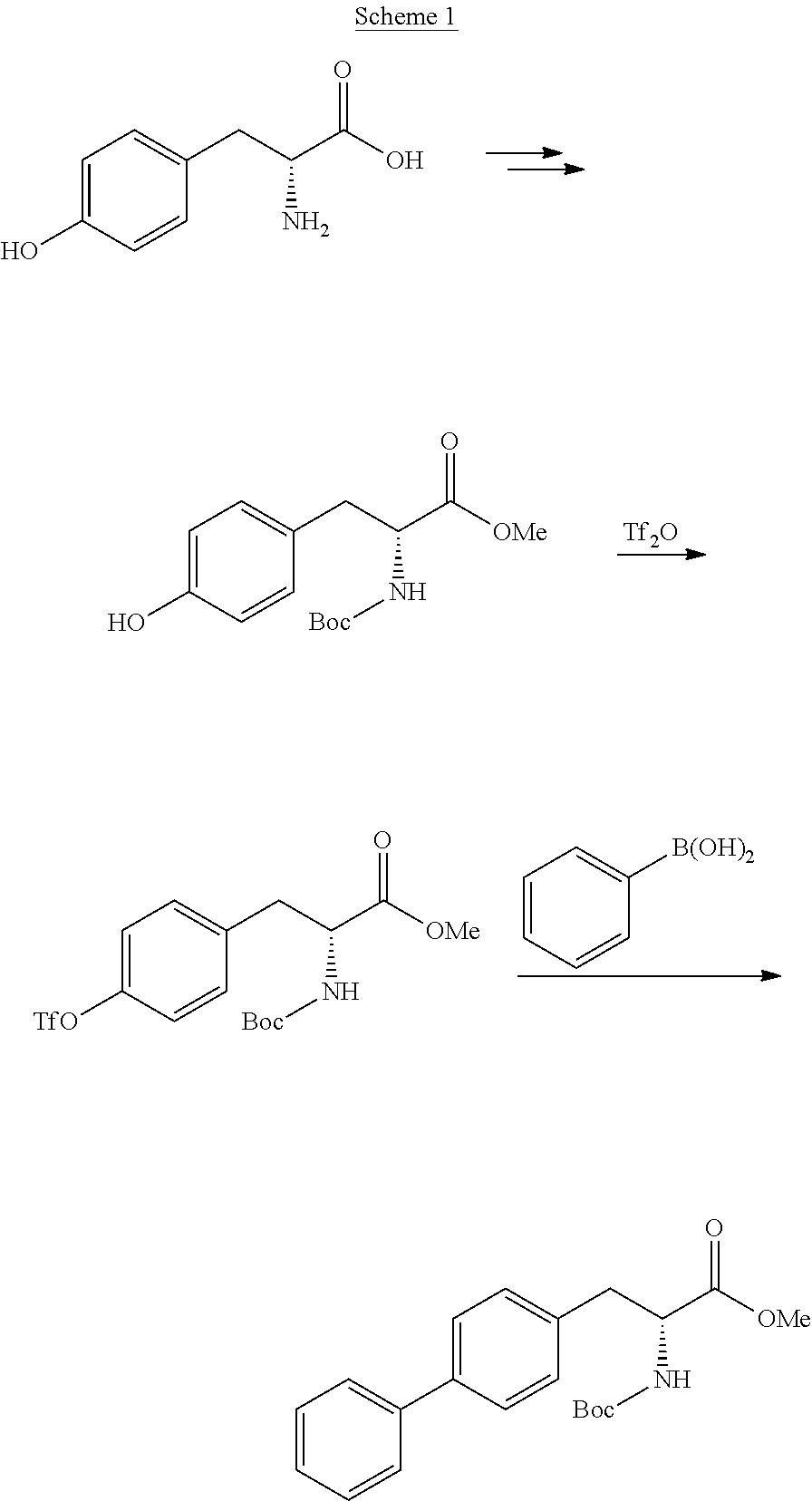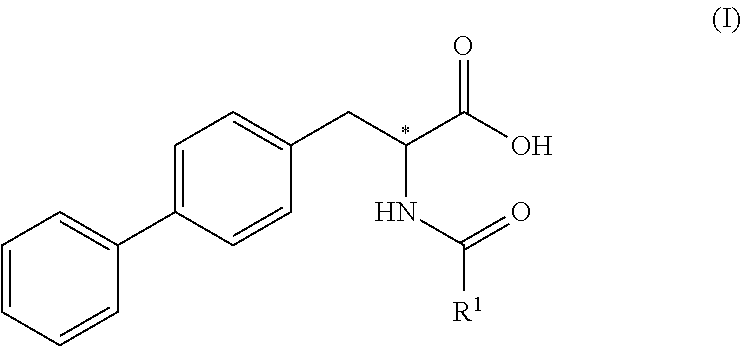New process
a technology of enantiomerically pure biphenyl alanine and process, applied in the preparation of carbamic acid derivatives, chemistry apparatus and processes, organic chemistry, etc., can solve the problems of unattractive process, high starting materials, and high cost of trifluoromethanesulfonic anhydride, and achieve simple and low-cost methods.
- Summary
- Abstract
- Description
- Claims
- Application Information
AI Technical Summary
Benefits of technology
Problems solved by technology
Method used
Image
Examples
example 1
[0171]The following examples describe the synthesis of compounds falling under general formula (3) according to the following general reaction
wherein X is halogen, preferably chloro, or —O—R5, wherein R5 is C1-C6-alkyl, preferably tert-butyl, and wherein the compound of formula (4) is reacted with a biphenylic compound, preferably an activated biphenylic compound.
Example 1A
(S)-1-([1,1′-biphenyl]-4-yl)-3-chloropropan-2-ol
[0172]
example 1a
1: (S)-1-([1,1′-biphenyl]-4-yl)-3-chloropropan-2-ol (lab scale)
[0173]4.94 g magnesium powder in 88 g THF were added to a 500 ml four-neck flask, and stirred. In parallel, a solution of 46.6 g 4-bromobiphenyl in 88 g THF was prepared. The reaction system was heated to 35-45° C. under vacuum and N2 atmosphere. To the magnesium / THF mixture, a small amount of iodine and 25 ml of the 4-bromobiphenyl solution in THF was added whilst stirring. Then, the rest of the 4-bromobiphenyl solution in THF was added at 35-45° C. whilst maintaining the temperature. After the mixture was cooled down, 3.81 g cuprous iodide was added and the mixture was further cooled down. Then, a solution of 22.2 g (S)-epichlorohydrine in 30 g THF was added at −15 to −20° C. whilst maintaining the temperature. Then the mixture was dropped into 120.4 g 4 M hydrochloric acid and stirred. Then, the mixture was allowed to stand to separate into the phases. The organic phase was collected, and the water phase extracted wit...
example 1a-2
(S)-1-([1,1′-biphenyl]-4-yl)-3-chloropropan-2-ol (industrial scale)
[0177]A mixture of 5.3 kg magnesium powder in 95 kg THF was heated to about 45-50° C. In parallel a solution of 50 kg 4-bromobiphenyl in 95 kg THF was prepared. To the magnesium / THF mixture 0.2 kg iodine and about 10% of the 4-bromobiphenyl solution was added. At about 45-50° C. the rest of the 4-brombiphenyl solution was slowly added during about 2-2.5 h. After further 2.5-3 h at this temperature the mixture was cooled down to about 0-5° C. Then 4 kg cuprous iodide was added and the mixture cooled down to about −15 to −20° C. After 30 min a solution of 56 kg (S)-epichlorohydrin in 100 kg THF was added at about −15 to −20° C. The temperature was maintained for about 4 h. Then the mixture was dropped into 32.6 kg 36% hydrochloric acid in 310 kg H2O at about 10° C. After 30 min at about 10° C., the mixture was then allowed to warm to about 20-25° C., and the phases are separated. The organic phase was concentrated at r...
PUM
| Property | Measurement | Unit |
|---|---|---|
| temperature | aaaaa | aaaaa |
| temperature | aaaaa | aaaaa |
| temperature | aaaaa | aaaaa |
Abstract
Description
Claims
Application Information
 Login to View More
Login to View More - R&D
- Intellectual Property
- Life Sciences
- Materials
- Tech Scout
- Unparalleled Data Quality
- Higher Quality Content
- 60% Fewer Hallucinations
Browse by: Latest US Patents, China's latest patents, Technical Efficacy Thesaurus, Application Domain, Technology Topic, Popular Technical Reports.
© 2025 PatSnap. All rights reserved.Legal|Privacy policy|Modern Slavery Act Transparency Statement|Sitemap|About US| Contact US: help@patsnap.com



